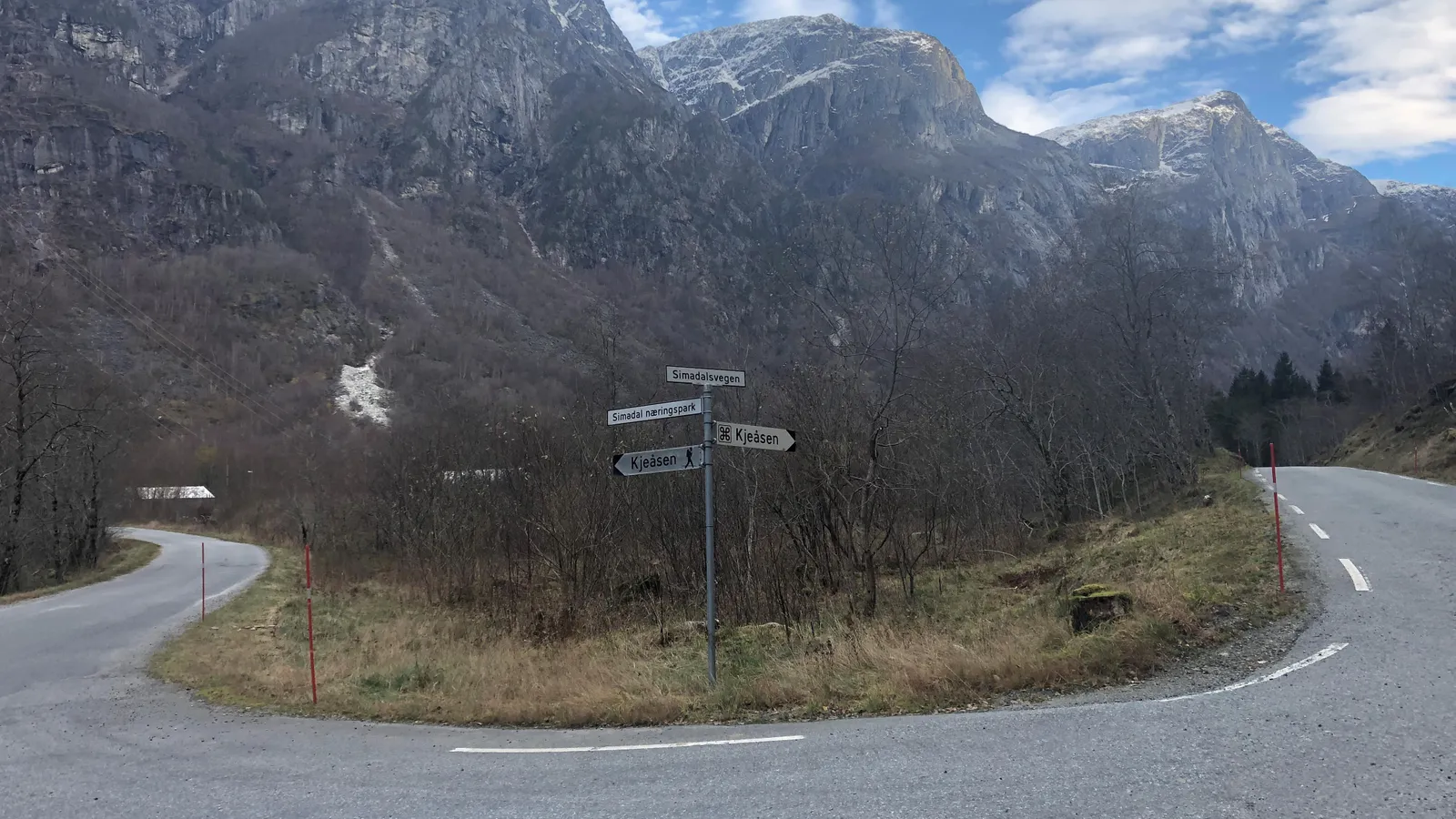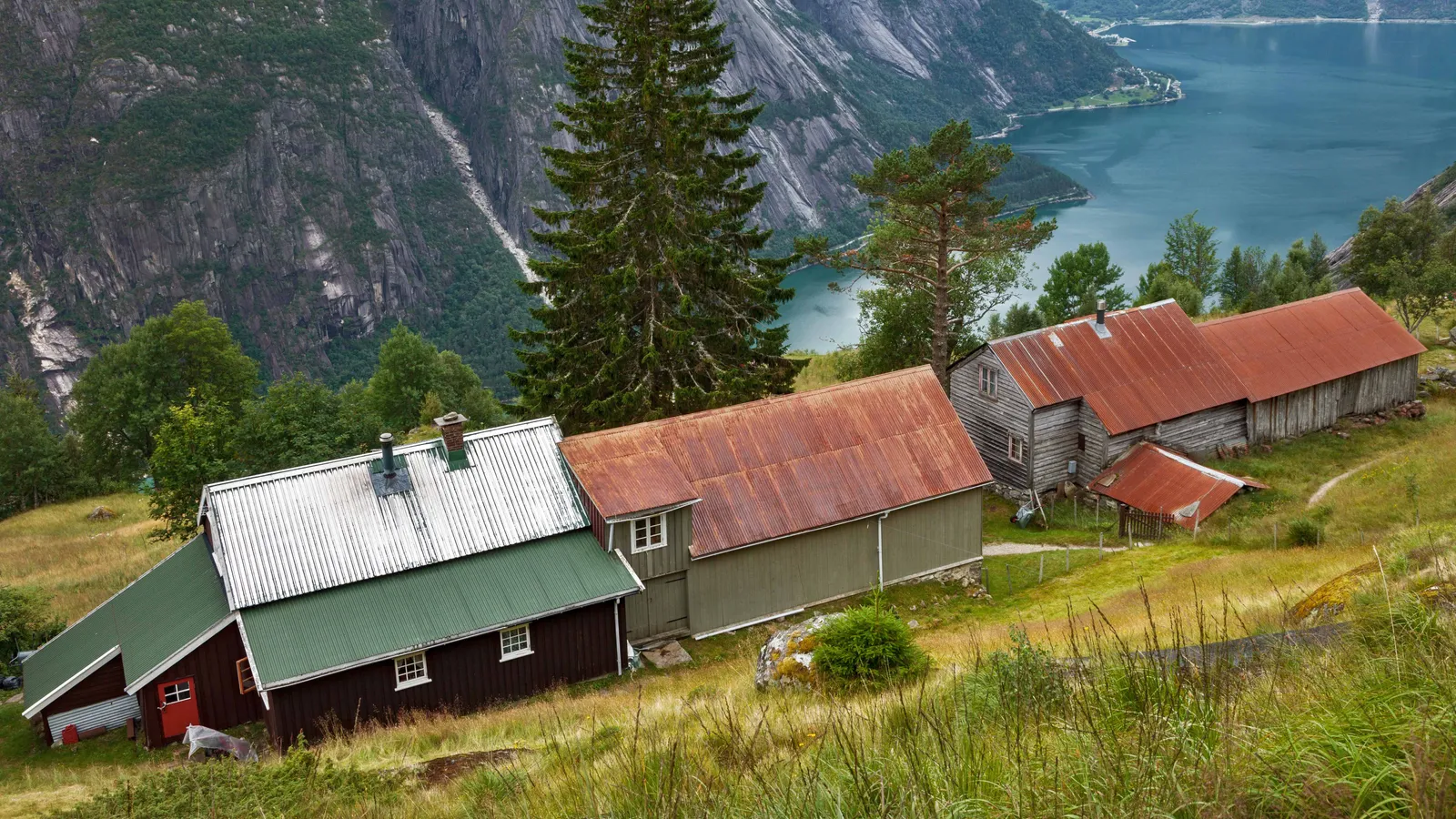he road to Kjeåsen, a mountain farm deep in western Norway’s fjord country, looks like a route to nowhere.
Hugging the shoreline of Simadalfjord, a tiny arm of Hardangerfjord, the road wanders from the village of Eidfjord past wooden waterside cabins and oxblood-red farm buildings. It rarely sees any traffic, which is just as well because the margin for error is measured in inches: one lapse in concentration and you’ll be in the water.
Up ahead, the outlook for a road trip is not promising. Sheer rock walls, so steep that they keep the valley floor in shadow for months every year, close the Simadalen valley off from the rest of the world on three sides. Where the fjord ends, the road passes through forests of pine and spruce, crosses a rushing stream fed by waterfalls and then arrives at a fork. Turn right and the road soon peters out in the forest, its onward path blocked by rock walls hundreds of metres high. Turn left in the direction of Kjeåsen and the journey seems equally unpromising for want of any obvious way forward.
I am travelling this road because my destination is no ordinary place. Kjeåsen sits 600 vertical metres above Simadalfjord, and its small collection of farm buildings is famous throughout Norway as one of the most isolated inhabited corners of the country. For most of its long history, there wasn’t even a road up to where it sits, perched on a narrow grassy ledge, hidden from the outside world but in thrall of one of the country’s most spectacular views.

Back then, it was one of the most difficult, most beautiful places to reach anywhere in Norway. To get to Kjeåsen involved a perilous, two-hour climb, using rope ladders and rope bridges across a landscape slickened with ice. There were once as many as 13 children at Kjeåsen, and their daily commute to the school in Simadal was a dangerous four-hour round trip. Access was so difficult that one of the buildings still extant at Kjeåsen took 30 years to build, back at the end of the 19th Century, because supplies had to be carried up the dangerous mountain trail on the backs of the builders.
To have lived there by choice, cut off from the world, must have been a conscious act of escape or of solitude. From where I am, down below, where Kjeåsen is just a name on a road sign, it’s impossible to imagine. In fact, it’s easy to wonder whether Kjeåsen exists at all.
There are many theories about the first people to settle here. “One is that it was a soldier who deserted from the Swedish army,” said Heidi Kvamsdal, a photographer, local historian and Eidfjord native. “Another theory is that the first ones tried to escape from the Black Death [in the 14th Century]”. In its aftermath, said Kvamsdal, people abandoned Kjeåsen for more than 150 years. But “we know that there has been permanent settlement there since early 16th Century.”
News of Kjeåsen first reached a fascinated outside world in the 1950s when Swedish writer Bror Ekström visited and wrote a book called Folket på Kjeåsen (People of Kjeåsen). The book told the story of a farm community, unique and tiny, of a world unto itself; of mountain families cut off from the outside world, yet somehow surviving against the elements. It was a story that juxtaposed inaccessibility with miraculous beauty. And their stories of isolation and resilience captured the public’s imagination.

In 1967, a woman named Bjørg Wiik moved to Kjeåsen to help her aunt look after the farm, and she was joined by her sister Guri in 1975 when their aunt passed away. The two sisters, formerly from Oslo, lived here alone until Guri’s death in 1999. Bjørg lived here year-round until 2019, when she was in her 90s, and she still returns with family members to pass the summer.
All kinds of people came; some in wheelchairs, some very old, even people who were blind. They all had a common goal: they needed to visit this place
The 8km access road was not finished until 1975. But the road did nothing to diminish Kjeåsen’s mystique. Instead, it was like an open invitation for the curious. Elin Kvale, a local guide who arrived in Eidfjord in 1975 when her husband worked on the road’s construction, would later take the first tourists to Kjeåsen. She remembers how “all kinds of people came; some in wheelchairs, some very old, even people who were blind. They all had a common goal: they needed to visit this place. Most of the people had read the book, some several times. They felt like they were walking on holy ground.”
Despite the road, Guri and Bjørg never learned how to drive – they preferred to walk or, if they needed supplies, they asked friends down in the valley to come up. In any case, even a road was no match for the depths of a Norwegian winter. As recently as 1994, the sisters were cut off from the outside world for more than a month by 3m-deep snow. Provided they had planned carefully and stockpiled sufficient supplies, the snows were less of a problem than the strong, icy winds that can rage at these altitudes: to this day, the roofs of all the farm buildings here are held in place by anchored steel cables. And on one occasion when the sisters fell ill with influenza while cut off by snows, a helicopter had to airdrop medicine and food to the stricken inhabitants.










More Stories
Venice Will Extend Day Trip Tax Through 2025 to Address Overtourism
North America Remains Top Travel Destination, According to Latest Amadeus Report
Biden Administration Launches Investigation Into Airlines’ Competition